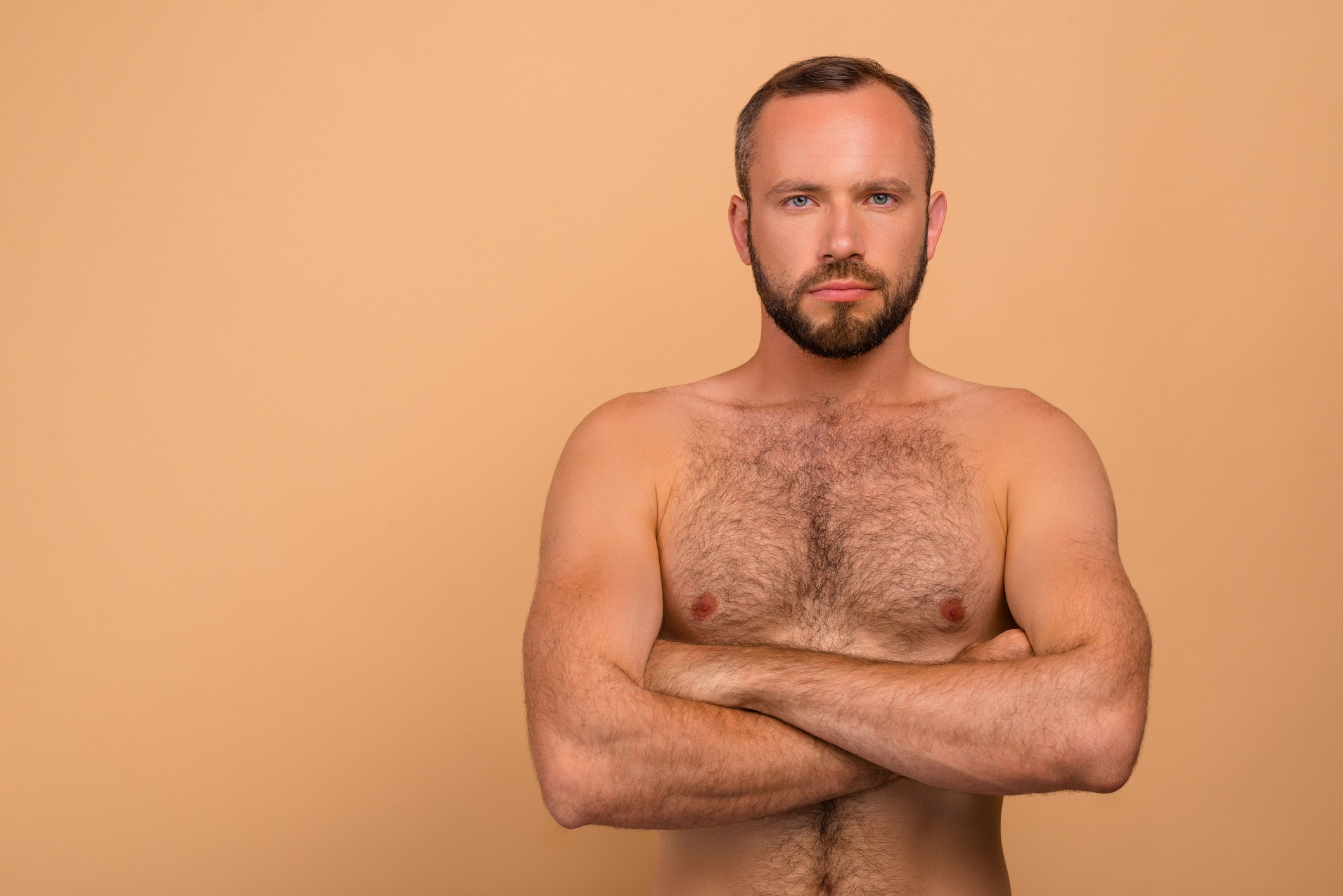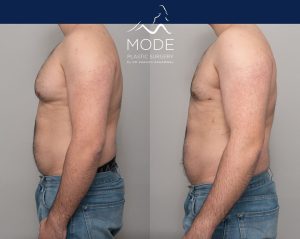
Gynaecomastia, often playfully referred to as “man boobs,” is something that many Australian males face at some point in their lives.
Gynecomastia describes the condition in which a man has oversized breasts. This is a scientifically recognized condition that can be identified by several key characteristics and can be treated with surgery.
What causes gynecomastia?
An imbalance between estrogen and androgen hormones typically causes gynecomastia. Men’s bodies usually produce small amounts of estrogen, the hormone that controls breast growth. If your body produces too much estrogen, or you have low testosterone (hypogonadism), your breasts may enlarge.
Sometimes people with obesity develop enlarged breasts due to excess fatty tissue. This condition is known as pseudogynecomastia.
While it’s usually not a big health concern, knowing how to spot it early can help you manage it better.
Here we provide 10 tips for men who believe they may have gynaecomastia and what to do next.
1. Give Your Chest a Feel (How do you do a pinch test for gynecomastia?)
Self-examination: Start by gently touching your chest around the nipple area. Gynaecomastia often feels like a firm, rubbery lump beneath the nipple.
A gynecomastia pinch test is performed by pinching the deep tissue under the nipple in the male breasts. Gynecomastia breast tissue feels like firm tissue but the excess fat is soft and spongy. The gynecomastia pinch test is a gynecomastia physical exam to diagnose gynecomastia from excess fat or pseudogynecomastia.
However, a more accurate gynecomastia diagnosis is performed by a plastic surgeon to evaluate the breast size and its contents.
Compare sides: Check if one side seems different from the other. It’s common for gynaecomastia to affect one breast more than the other.
2. Do Your Nipples Feel Sensitive (Does gynecomastia hurt when you touch it?)
Men who experience gynecomastia can have breast pain and discomfort. This is true for men who have glandular gynecomastia and not pseudogynecomastia. Gynecomastia or manboobs caused by fat build up is not painful.
3. Nipple Watch
Nipple prominence: Puffy Nipples differ from Classic Gynecomastia in that the nipple and areola are cone shaped causing the areola to appear “Puffy”. On an ideal chest, the areola is even with the surrounding chest skin. When there is a case of “Puffy Nipples”, the areola projects outward. This is especially true in warmer or hot temperatures. Many men routinely complain that their nipples are too visible in thin clothing during hot weather.
4. Emotional Check-In
Gynecomastia can have a profound effect on mental health and self-esteem. Many men feel embarrassed or ashamed of their condition, leading to feelings of insecurity or low self-worth. This may lead to depression or anxiety, which can further exacerbate existing mental health issues.
In addition, men with gynecomastia often experience social isolation due to embarrassment about their appearance. They may avoid social situations or refrain from engaging in activities they once enjoyed due to fear of judgement from others. This can lead to loneliness and a decreased quality of life.
5. Hormonal Rollercoaster
Other hormone-related issues: Keep an eye out for other signs of hormonal imbalance, like fatigue, mood swings, or changes in your interest in things you usually enjoy. These can sometimes come alongside gynaecomastia.
6. Age Matters
Teen years: Some breast enlargement is common in boys while they are going through puberty. It is a normal part of growing up. However, some boys find this hard to deal with and can be upset and embarrassed. Boys who are overweight are more likely to develop gynaecomastia, as cells that store fat can also make estrogens. Breast tissues are sensitive to estrogen in boys (as it is in girls). Even small amounts of estrogen can cause breast development. Although for most boys gynaecomastia is part of normal puberty it is important to exclude some medical conditions that are known to cause this. Gynaecomastia may not be easily noticeable. If the boy is overweight, it can sometimes be difficult to tell whether it is breast or fat tissue. In this case pressing the area around the nipple with thumb and forefinger may confirm a circle of rubbery or firm breast tissue.
As you get older: Male testosterone production drops one to two percent each year after age 30, leaving less testosterone available to balance out his estrogen (every man possesses low levels of estrogen to regulate sperm production, bone density, and mood) as he ages. Testosterone can convert into estrogen in the body—therefore, in essence, you are left with higher estrogen levels in your body, and estrogen is the hormone responsible for breast growth. A dip in testosterone also contributes to weight gain, and added fat stimulates the body to produce more estrogen. Make sure to monitor any breast changes as you grow up.
7. Watch Out for Risk Factors
Gynecomastia can be caused by a variety of factors, including hormonal imbalance, certain medications, and medical conditions such as liver disease or kidney failure. Other risk factors include obesity, use of anabolic steroids, anti-androgens, certain antidepressants or other drugs, excessive alcohol consumption. If you’re taking any, keep an eye on your chest. Avoid using anabolic steroids or recreational drugs because they can up your gynaecomastia risk.
8. Stay Active and Eat Right
Keep it healthy: Staying active releases endorphins. Endorphins keep your stress levels at bay and give you a surge of confidence. Endorphins also help you feel happy, which is vital to enjoying “bikini season” when you have gynecomastia. In other words, whether you’re playing volleyball or swimming, make sure you stay active. Exercising may also reduce your breast size.
A well-balanced diet can reduce the symptoms of gynecomastia. A poorly-balanced diet adds excess weight to our bodies in general. The extra weight can go to your chest, making your enlarged breasts more pronounced and droopy.
9. Family Clues
Genetics at play: If gynaecomastia runs in your family, you might be more prone to it. So, make sure to stay vigilant about your chest for any changes.
10. Talk to an expert
Seek medical advice: If you spot any of the signs mentioned or if you’re just worried about your chest, don’t hesitate to reach out to a healthcare pro.
Get checked: A doctor can do a thorough check-up, review your medical history, and even order some tests if needed to confirm if it’s gynaecomastia and rule out other issues.
Before & After Gynaecomastia Surgery
This patient of Dr Aggarwal had mild gynaecomastia which he was very self conscious about. This before and after result is shown 3 months after surgery which included liposuction and direct gland excision through a concealed scar around the nipple. The aim of surgery is to allow this patient to have the confidence to take his shirt off when swimming or at the beach, with scars that are difficult to see.

Gynaecomastia is something that plenty of Australian men face. While it’s usually not a big deal, knowing how to spot it early can make it easier to deal with. If you think you might have gynaecomastia or notice any of the signs we talked about, have a chat with a healthcare pro. Getting the right advice early on can help you manage it well and keep your peace of mind about your health.
Remember, you’re not alone in this, and there are solutions available to help you handle it.